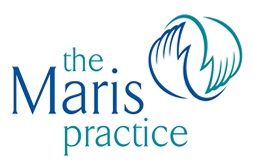Antibiotics are generally very safe but do have side effects. Some patients report symptoms such as stomach upsets, diarrhoea and allergic reactions. According to the NHS, 1 in 10 people experiences side effects that harm the digestive system after taking antibiotics. Around 1 in 15 people are allergic to some types of antibiotics.
Therefore, it is generally (in otherwise healthy people) a good idea to let milder illnesses (especially those thought to be caused by viruses) run their course. This helps avoid antibiotic-resistant disease strains developing. Your doctor can advise if an illness is “mild” or not. They can also help you explore your options and weigh the potential benefits and risks.
Antibiotics are extremely helpful; they kill bacteria and stop them from multiplying so allowing the body to fight back. Unfortunately overprescribing of antibiotics has resulted in the development of resistant bacteria, that are no longer killed by antibiotics. In recent years the concern is that antibiotics are becoming less effective and this trend will continue. The emergence of the term “superbugs” refers to these resistant strains of bacteria. Antibiotic resistance is one of the world’s most pressing health problems. You can learn ways to help prevent antibiotic resistance here. If your doctor does prescribe you antibiotics, be sure to finish the entire treatment regime.
People are also turning to (or turning back to!) natural antibiotics for treatment of some infections. The scientific jury is still out concerning natural antibiotics. While people have used remedies like these for hundreds of years, most treatments have not been thoroughly tested. Some are showing promising results under medical review and further studies are underway. With an ongoing increase in drug-resistant bacteria, humans are again looking to nature when developing new medications.
Here, we give you the science behind four natural antibiotics.
Garlic – Cultures across the world have long recognized garlic for its preventive and curative powers. Research has found that garlic can be an effective treatment against many forms of bacteria, including Salmonella and E. coli.
Honey – Since the time of Aristotle, honey has been used as an ointment that helps wounds to heal and prevent or draws out infection. Honey contains hydrogen peroxide, which may account for some of its antibacterial properties. It also has a high sugar content, which can help stop the growth of certain bacteria.
Ginger – Several studies, including one published in 2017 which you can read here, have demonstrated ginger’s ability to fight many strains of bacteria.
Echinacea – Native American and other traditional healers have used echinacea for hundreds of years to treat infections and wounds. Scientists are now beginning to understand why this works. A study published in the Journal of Biomedicine and Biotechnology reports that extract of Echinacea purpurea can kill many different kinds of bacteria, including S. pyogenes which is responsible for strep throat, toxic shock syndrome and the “flesh-eating disease” known as necrotizing fasciitis.
Once you have completed treatment with antibiotics and are recovered, then it is likely that you will need to restore the balance of bacteria in your digestive system; commonly referred to as ‘good’ bacteria. Your diet is very important in achieving this. Fermented vegetables, natural yoghurt and more are key.

